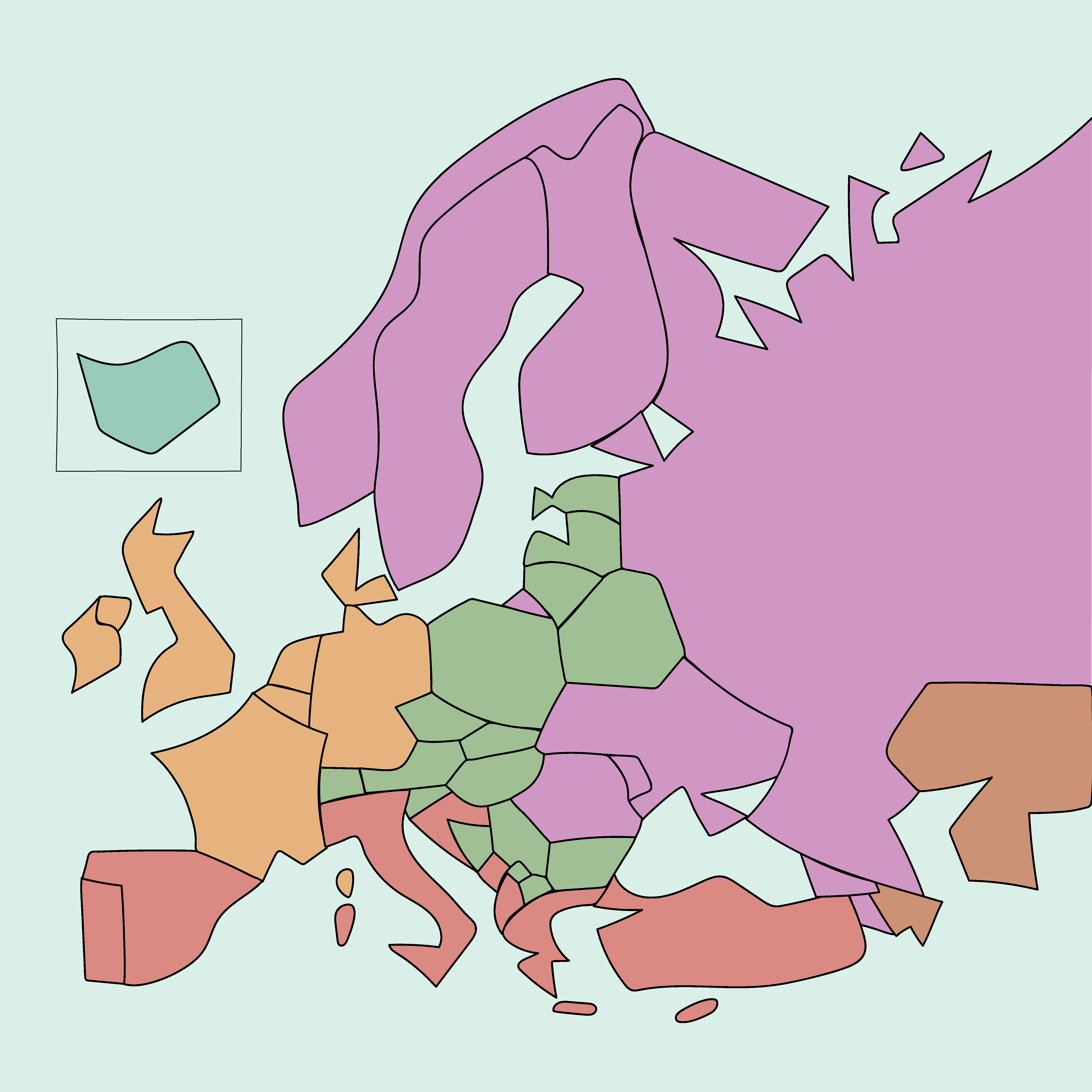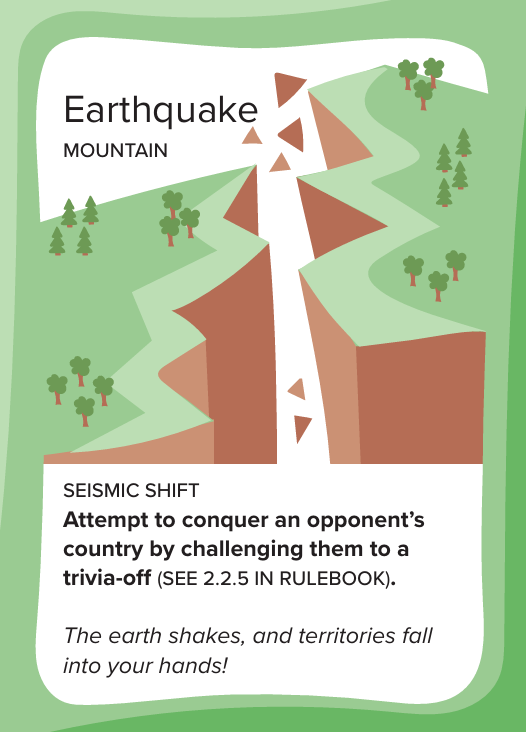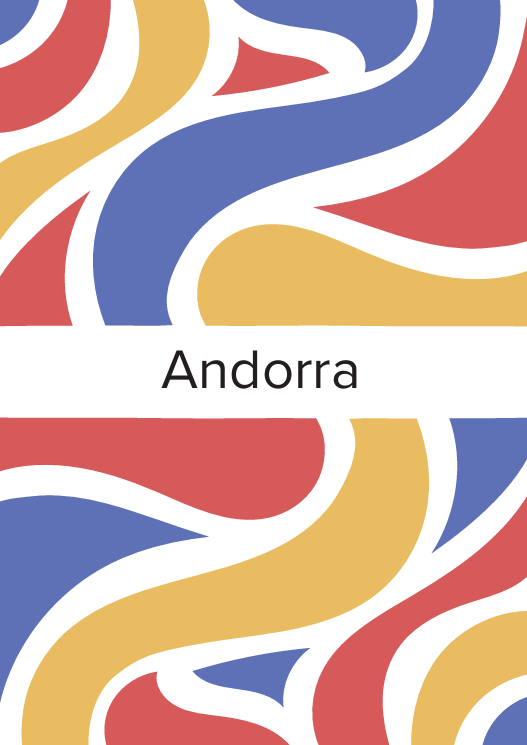In a world of constant distractions, students struggle to retain what they learn. What if education was a thrilling adventure, where memory is built through play? This project turns geography into a game, making learning easy, memorable, and fun.
Conquiz game box
Conquiz is a 2–4 player educational board game where players compete to conquer countries across Europe by answering geography-based trivia questions.
The goal is to reach 1000 points, earned by successfully answering questions and claiming countries of varying difficulty and value. On each turn, players can move, attempt to conquer adjacent countries, or even challenge opponents in trivia-offs to steal territory. Special cards, namely Country Mascots and Natural Disasters, add strategic twists, making gameplay dynamic and engaging.
Brief
For our capstone project, we had full creative freedom to design something new that applied the skills and knowledge we’d gained in our graphic design classes.
I chose to create a board game, inspired by a previous project where I used gamification. Having struggled with focus in school despite always trying my best, I wanted to explore how the process of gamification could support learning, specifically in the subject of geography.
Conquiz setup
Mascot Cards
Creative Process
Background
In today’s fast-paced digital environment, students face growing challenges with focus and memory retention, which are essential skills to effective learning.
Enter Conquiz, an educational geography board game targeted at middle and high school students (aged 11 to 18) that aims to respond to this problem by promoting active engagement, strategic thinking, and long-term retention.
While centered on geography, the game reflects a broader design philosophy: using playful, interactive tools to make learning more meaningful and suited to the habits of a new generation.
Design Thinking
To conduct this project, I used the double diamond design method, splitting the process in the following phases:
• discover — academic research on learning and game theory, competition analysis, student and teacher surveys, empathy and stakeholders maps, visual research on geography and board games, and brainstorming.
• develop — problem statement, target audience and objectives, learning goals, success criteria, user personas, and game mechanics.
• design — branding and visual identity, game mechanics and rules overview, designs in progress, grids and layout, and prototyping and testing.
• deliver — final proposal, final designs, printed designs and additional applications, the game as an object, social media presence, and self-evaluation.
Challenges
The main challenge I faced was realizing late in the semester that the project was more ambitious than expected and would require months to fully execute. As a result, I didn’t have time to test the game in classrooms as planned, a crucial step for both its educational value and functionality. However, I was able to gather some last-minute feedback by testing it with friends.
Game testing setup
Final Outcome
Favorite Details
Some unique selling points of this game include:
• Globi, the fun and helpful game mascot, guiding the players through the game rules
• the original name "Conquiz", as players will be "conquering" countries by answering to "quizzes"
• the playful designs and creative naming of the country mascots (e.g., Pete the Pinecone, Mark the Meatball, Li and Lo the Lavenders, Elia the Olive, etc.)
• the modern and minimalistic map design, intriguing players and keeping them captivated with its climate-based color code
• the overall playful illustration style and the personification of the different countries, allowing students to see geography in a new light

Conquiz setup

Map board in progress

Map board in progress

Map board

Conquiz game box, back

Conquiz rulebook

Rulebook page

Rulebook spread

Rulebook spread

Mascot cards

Natural Disaster cards

Natural Disaster card

Country cards

Country card example: Andorra (back)

Country card example: Andorra (front)

Mascot stickers

Globi, the game's mascot
Lessons Learned
This project taught me the importance of time management, and in this case, properly allocating time for each phase of the design process.
In game design especially, it’s crucial to leave time after the initial design phase to print a draft version and test it with the target audience and to not shy away from testing unfinished or imperfect work.
Globi cupcakes: a playful addition to the capstone presentation, and an example of future design applications
Capstone presentation day
Future Paths
For the capstone project, Conquiz is presented as a sample version, featuring 25 of the 51 European countries. My next steps include designing the content for the remaining European countries (visuals, materials, questions) to complete the game and print a full version.
With the help of teachers, starting with those from my former school Lycée Franco-Hellénique, I plan to test it in classrooms, adapt the questions to fit the curriculum, and possibly create French and Greek versions.
Ultimately, my goal is to publish Conquiz through a board game company and bring it to market.